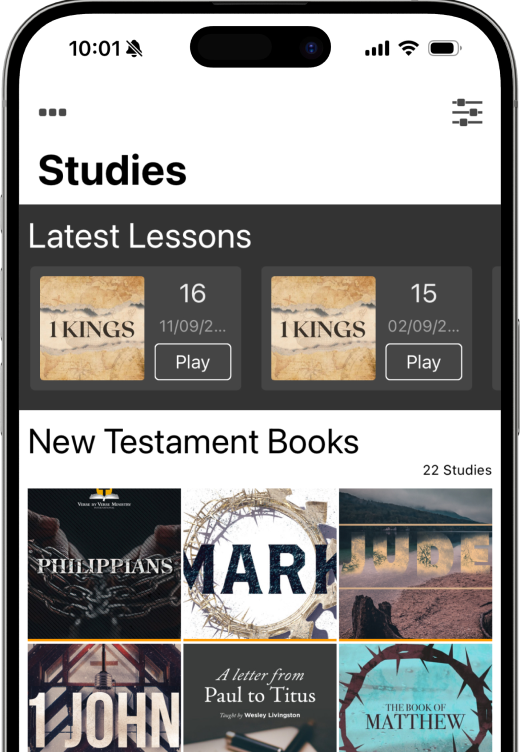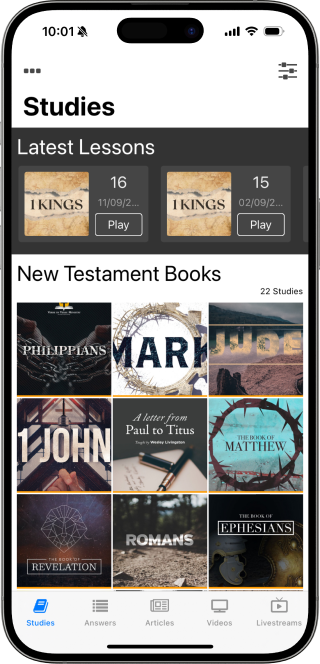You teach that Moses was punished by God for striking the rock twice in Numbers 20, but the text says He was punished for striking the rock instead of speaking to it. Which is true?
In Numbers 20 Moses was told to speak to the rock in the desert to bring forth water for Israel:
Num. 20:8 “Take the rod; and you and your brother Aaron assemble the congregation and speak to the rock before their eyes, that it may yield its water. You shall thus bring forth water for them out of the rock and let the congregation and their beasts drink.”
In frustration with the people of God, Moses chose to strike the rock instead of speaking to it:
Num. 20:9 So Moses took the rod from before the Lord, just as He had commanded him;
Num. 20:10 and Moses and Aaron gathered the assembly before the rock. And he said to them, “Listen now, you rebels; shall we bring forth water for you out of this rock?”
Num. 20:11 Then Moses lifted up his hand and struck the rock twice with his rod; and water came forth abundantly, and the congregation and their beasts drank.
Earlier in Exodus, the Lord did instruct Moses to strike the rock to produce water:
Ex. 17:6 “Behold, I will stand before you there on the rock at Horeb; and you shall strike the rock, and water will come out of it, that the people may drink.” And Moses did so in the sight of the elders of Israel.
So in Exodus 17, Moses obeyed God by striking the rock, but in Numbers 20 Moses disobeyed God by striking the rock instead of speaking to it. The incident in Numbers 20 was the second time Moses struck the rock, the first time being in Exodus 17. Therefore, we teach that Moses was punished for striking the rock twice in the sense of striking it Numbers 20 and in Exodus 17, not in the sense of striking it two times in Numbers 20.
New Testament Scripture in 1Corinthians teaches that the rock in the desert was intended by God to be a picture of His Son, Jesus Christ:
1Cor. 10:1 For I do not want you to be unaware, brethren, that our fathers were all under the cloud and all passed through the sea;
1Cor. 10:2 and all were baptized into Moses in the cloud and in the sea;
1Cor. 10:3 and all ate the same spiritual food;
1Cor. 10:4 and all drank the same spiritual drink, for they were drinking from a spiritual rock which followed them; and the rock was Christ.
When the Lord instructed Moses to strike the rock in Exodus 17, He intended to establish a picture of Christ as our Redeemer. The Bible says repeatedly in Psalms and Isaiah that Christ is our Rock and Cornerstone struck (i.e., killed) for our sake, and He will bring forth streams of living water (i.e., salvation...see John 4:10). Moreover, Hebrews says Christ died once for all and no further sacrifice for sins is required.
So the Lord intended Moses strike the rock in the desert only once in the scene from Exodus 17, thus picturing Jesus sacrificed once to bring us salvation. Later in Numbers 20, the Lord instructed Moses to only speak to the rock to preserve the picture created in Exodus 17. When Moses chose to strike the rock a second time instead, he disrupted the picture created in Exodus 17. Had God allowed Moses' mistake to go unchallenged, we would likely be confused by the distorted picture, concluding it was necessary for Christ (i.e., the rock) to be sacrificed (i.e., struck) repeatedly for our salvation.
Therefore, God rebuked Moses to assure our proper understanding of the picture of the rock barring him from entering the Promised Land. In the process, the Lord formed a new picture to support a proper understanding of salvation. By barring Moses from the Promised Land, the Lord illustrated that we cannot enter into salvation (i.e., the Promised Land) by works of Law (i.e., by Moses) but only by the work of Jesus (i.e., by Joshua, which is the name Yeshua or Jesus).
Scripture quotations taken from the (NASB®) New American Standard Bible®, Copyright © 1995, 2020 by The Lockman Foundation. Used by permission. All rights reserved. www.lockman.org




